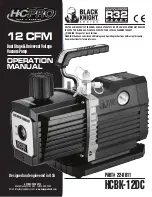
4
Terms, De
fi
nitions and Formulas
First Hour Rating (FHR)
is a volume of hot water delivered by a water heater during a 1-hour, Department
Of Energy mandate test procedure. The FHR is given in gallons or liters.
Energy Factor (EF)
is an indicator of the combined thermal ef
fi
ciency and standby ef
fi
ciency of a water
heater. The higher the Energy Factor, the more ef
fi
cient the water heater will be.
Recovery rate
is the amount of water, expressed in gallons per hour (GPH),heated to a given temperature
rise. Residential water heaters are typically rated at approximately 90°F temperature rise. IE: A standard
electric water heater with one 4.5 kW (kilowatt) electric heating element can produce 20 GPH at an
approximate 90°F rise.
Temperature rise
is the increase in the temperature from its coldest “inlet” water temperature to the desired
hot “outlet” setting.
Standby ef
fi
ciency
relates to the ability of the product to retain the stored heat (Btu) while the heating
source is not on. Insulation and other services are used to increase this ef
fi
ciency.
Water
(for all practical purposes) cannot be compressed.
Water expands
when it is heated. The volume and pressure of water increases when it is heated in a closed
system. IE: Water heated from 90°F to 140°F in a 40 gallon water heater will expand by approximately one-
half gallon.
Minerals and gases
will separate from water as temperature increases.
Amperage
(Amps) (1 phase) =
Watts
divided by Volts (Ohm’s Law)
KW Required
= (GPH X 8.25 X Temp. Rise X 1.0) divided by (3413)
Ohms
= Volts divided by Amperes (Ohm’s Law)
One killowatt
is equal to 1000 watts
One kilowatt
is equal to 3,413 BTU
Recovery Rate
=(KW X 3413) divided by (Temp. Rise X 8.25)
Rise (°F)
= (KW X 3413) divided by (GPH X 8.25)
Supply electrical fusing and wiring
or breakers should be sized at least 125% of expected heater
amperage, per NEC and local codes.
Water weighs
8.25 pounds per gallon at 120°F
% of Hot
water = (Mixed temp. - Cold) divided by (Hot temp. - Cold). This formula gives the number of
gallons drawn from the water heater for each gallon delivered at a shower head or faucet. If the shower head
fl
ow rate (gallons per minute) is known, the draw ef
fi
ciency and gallon capacity of the water heater may be
used to calculate the length of the showering period in minutes.
Watt Density =
the density of the wattage output of the element compared to the surface area of the
element (i.e. “High Watt Density Element” will have the most wattage per square inch of element surface.





































